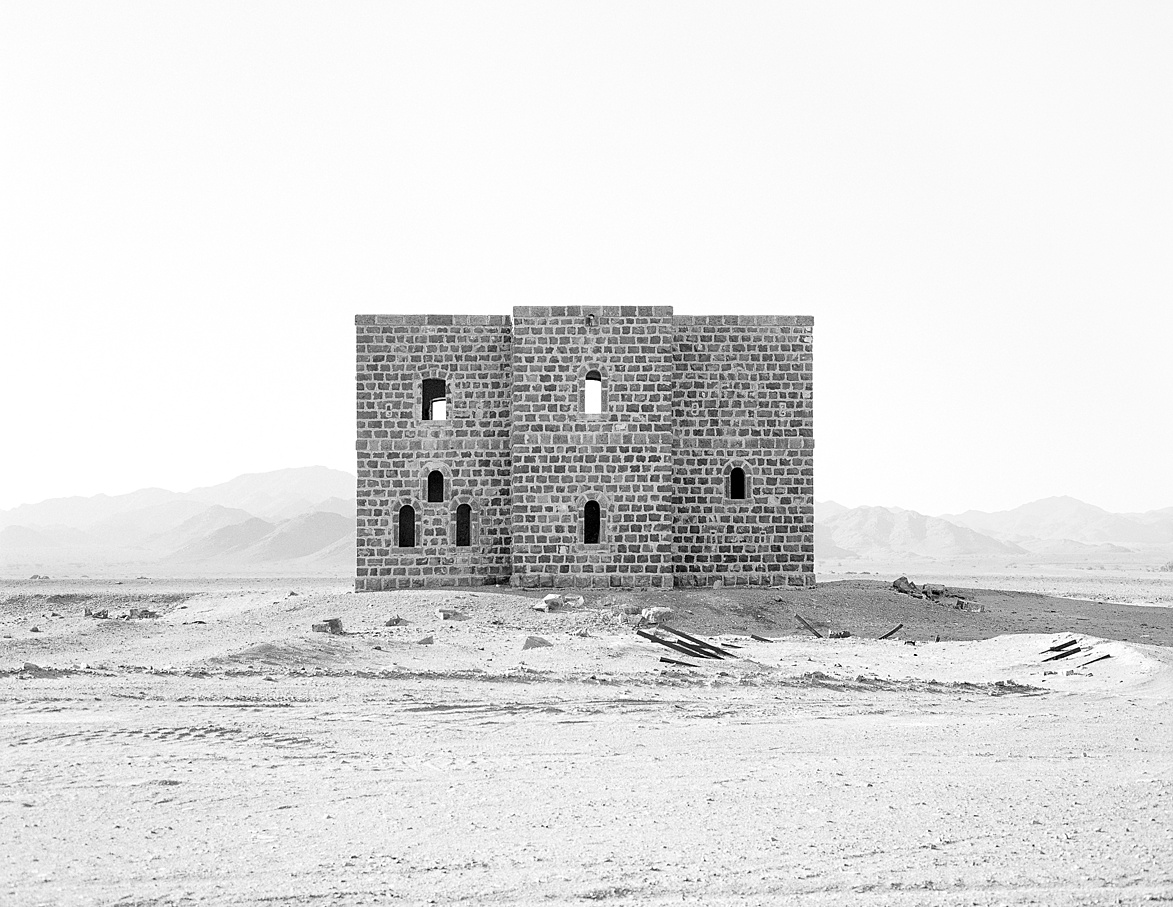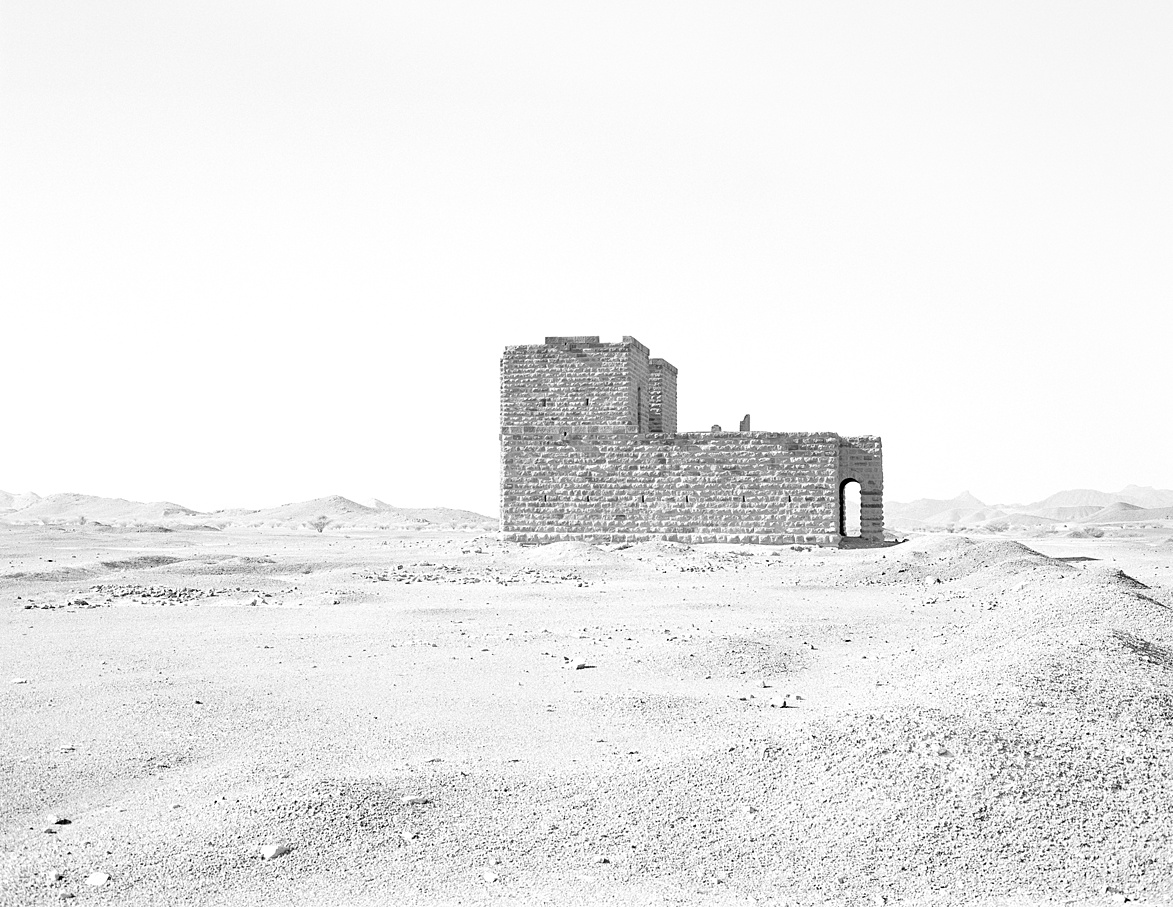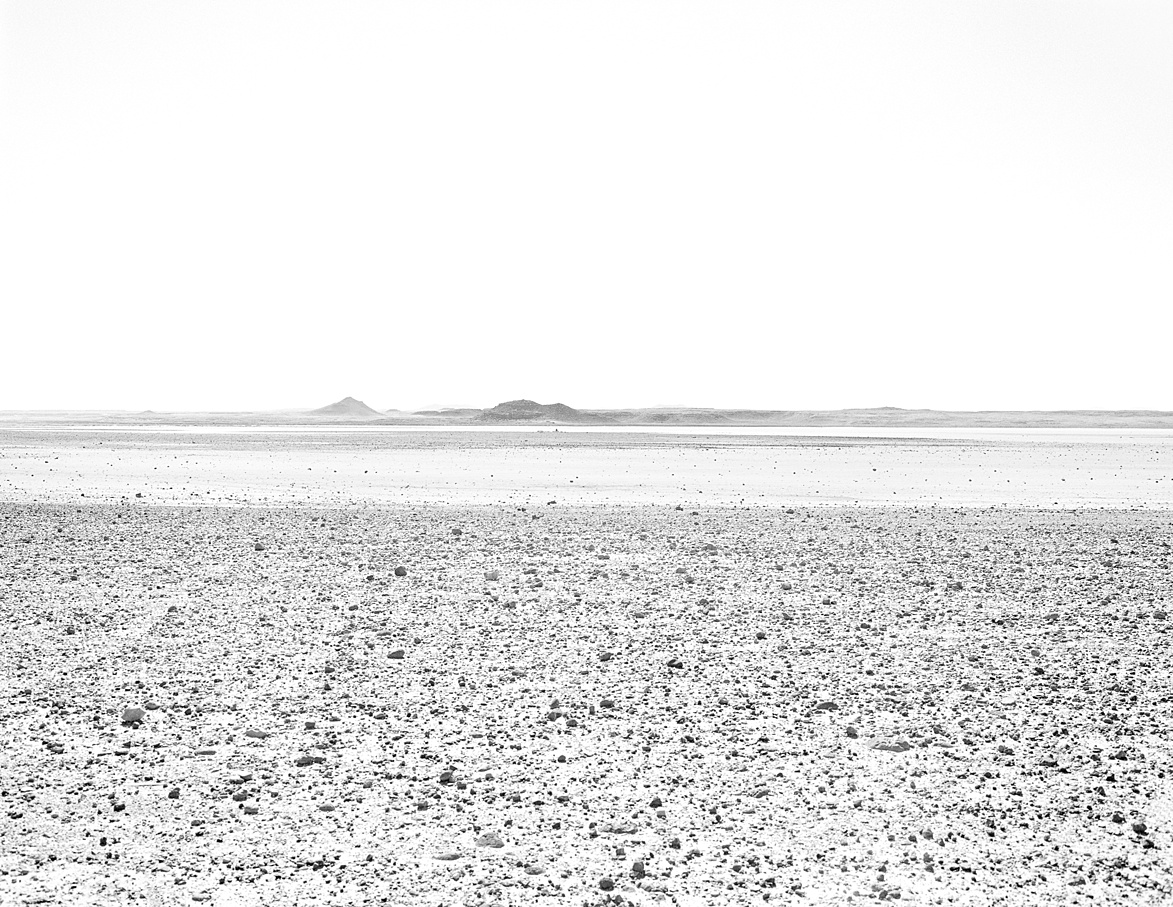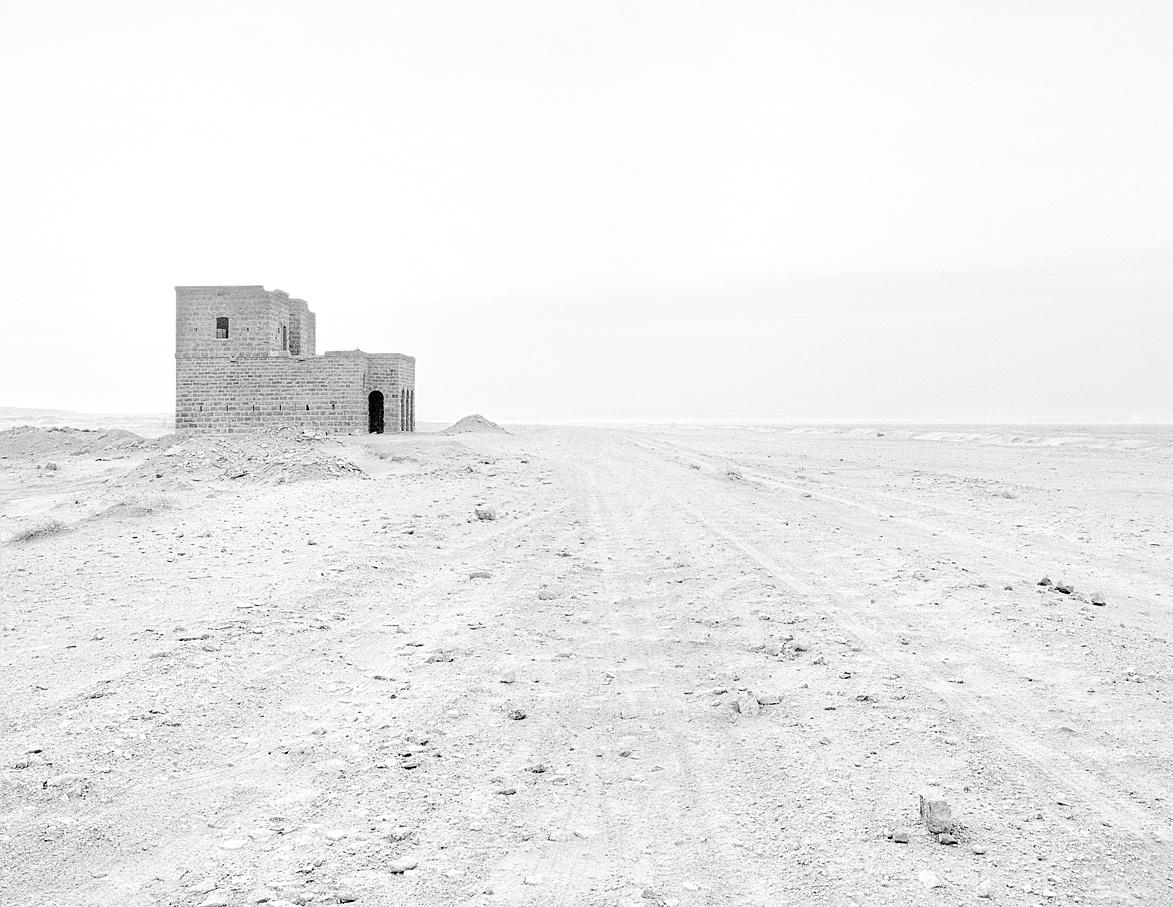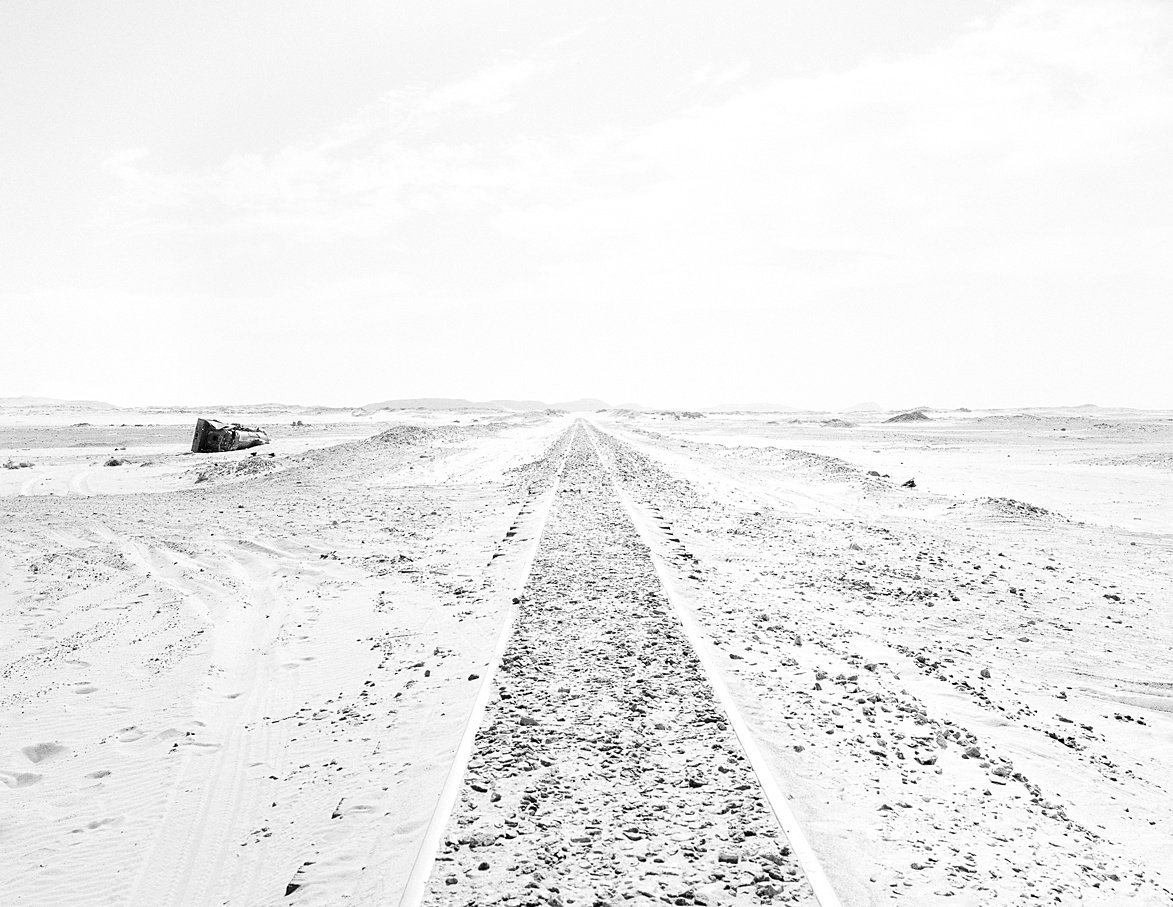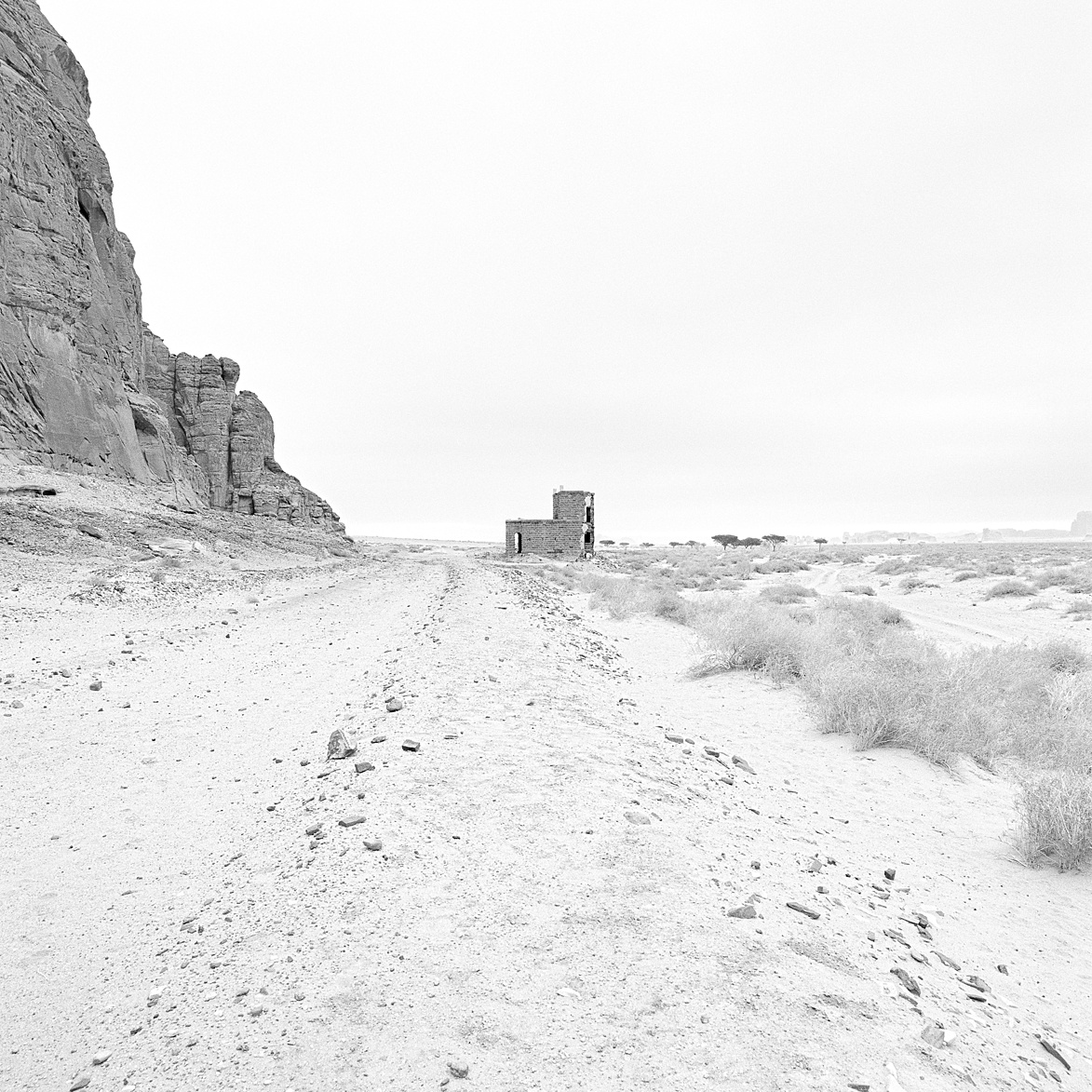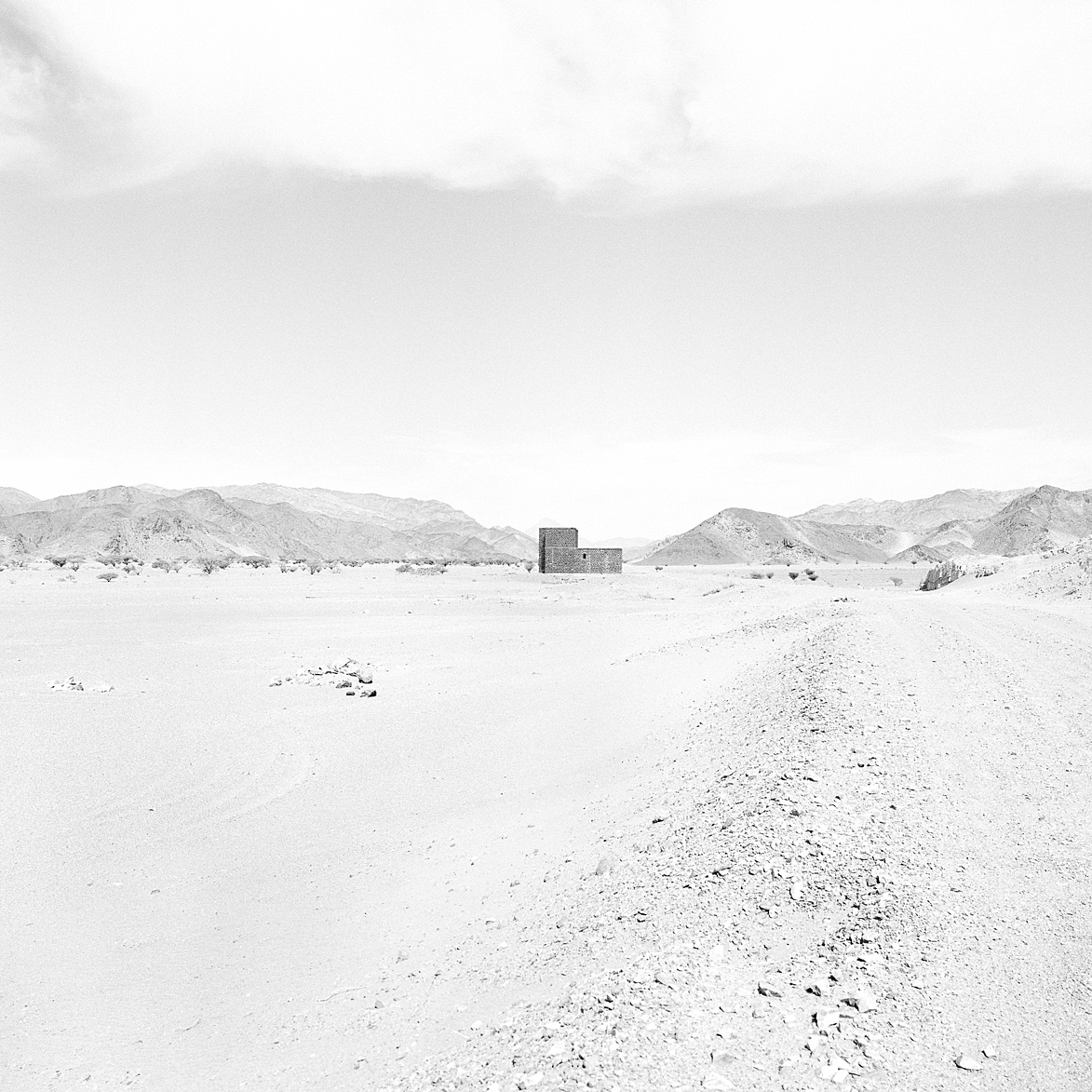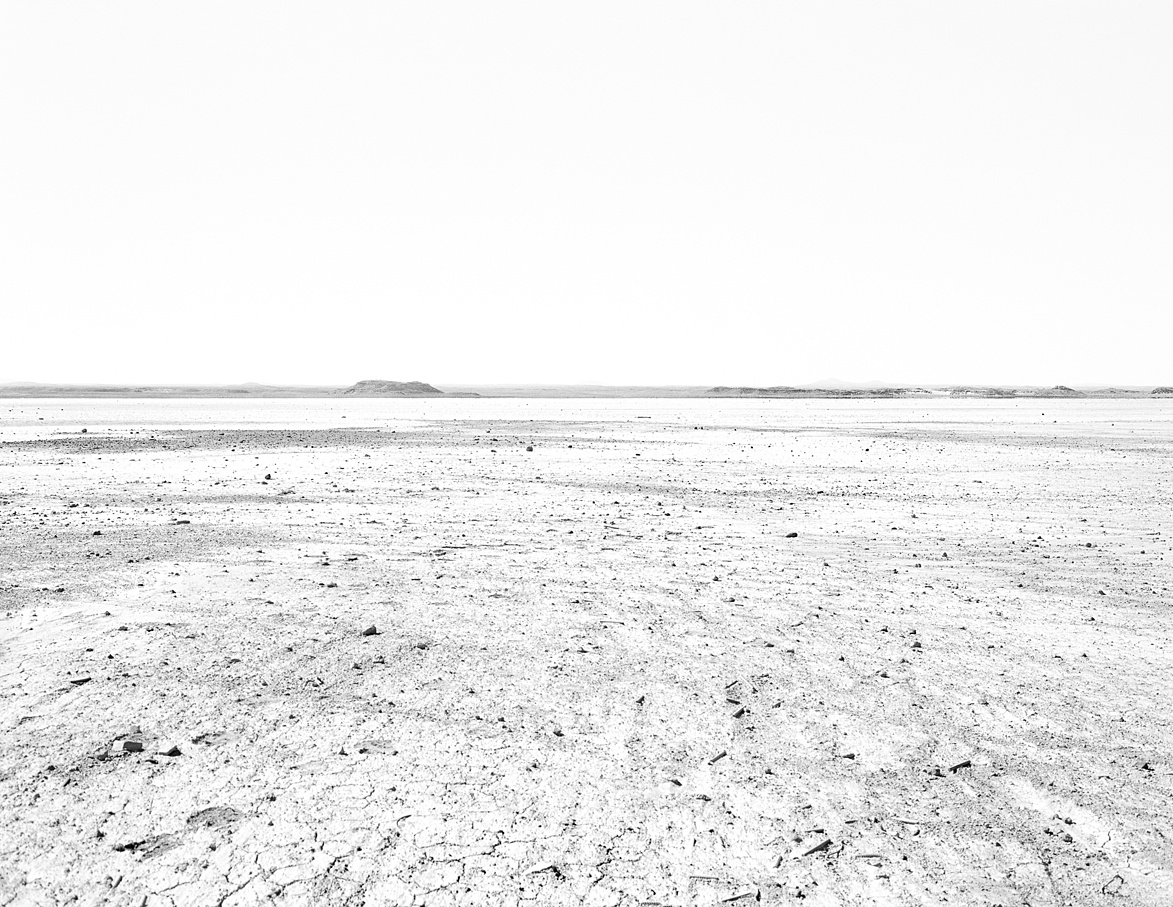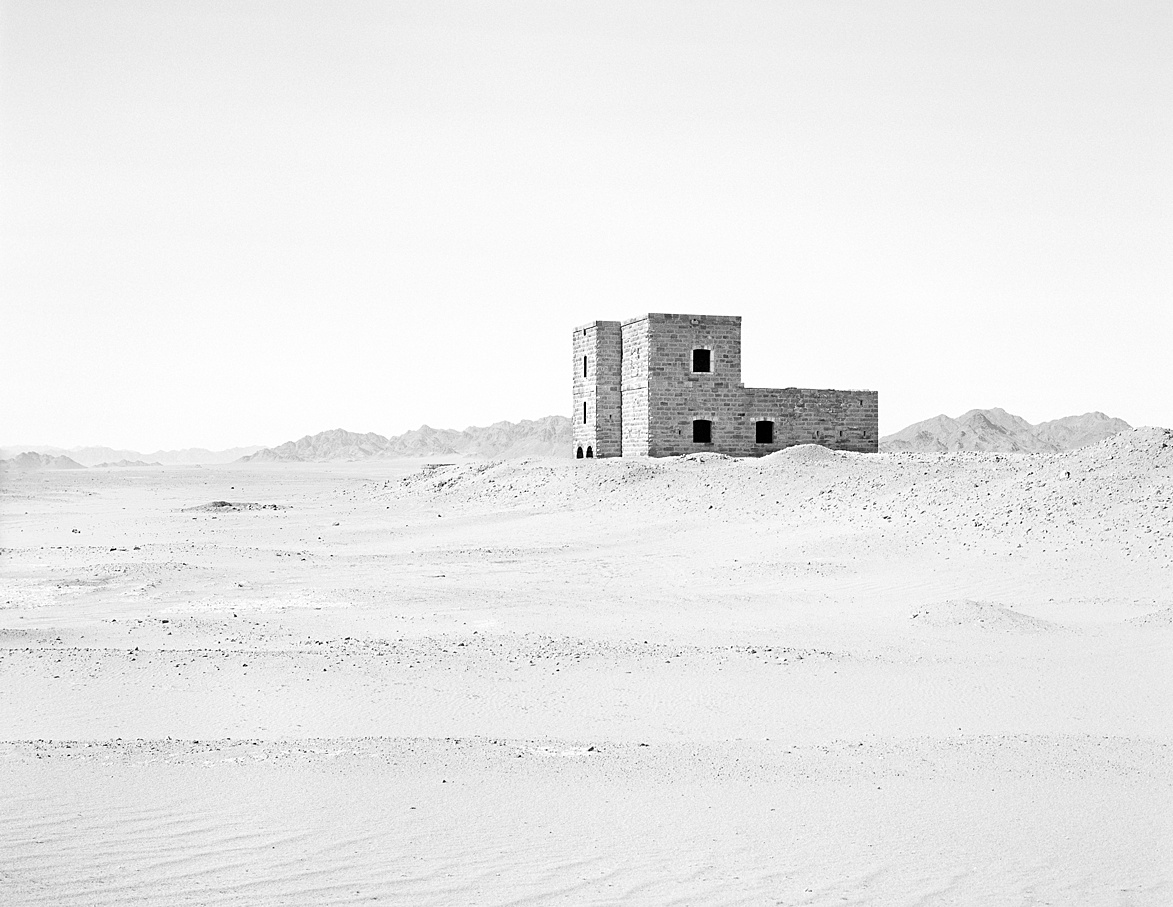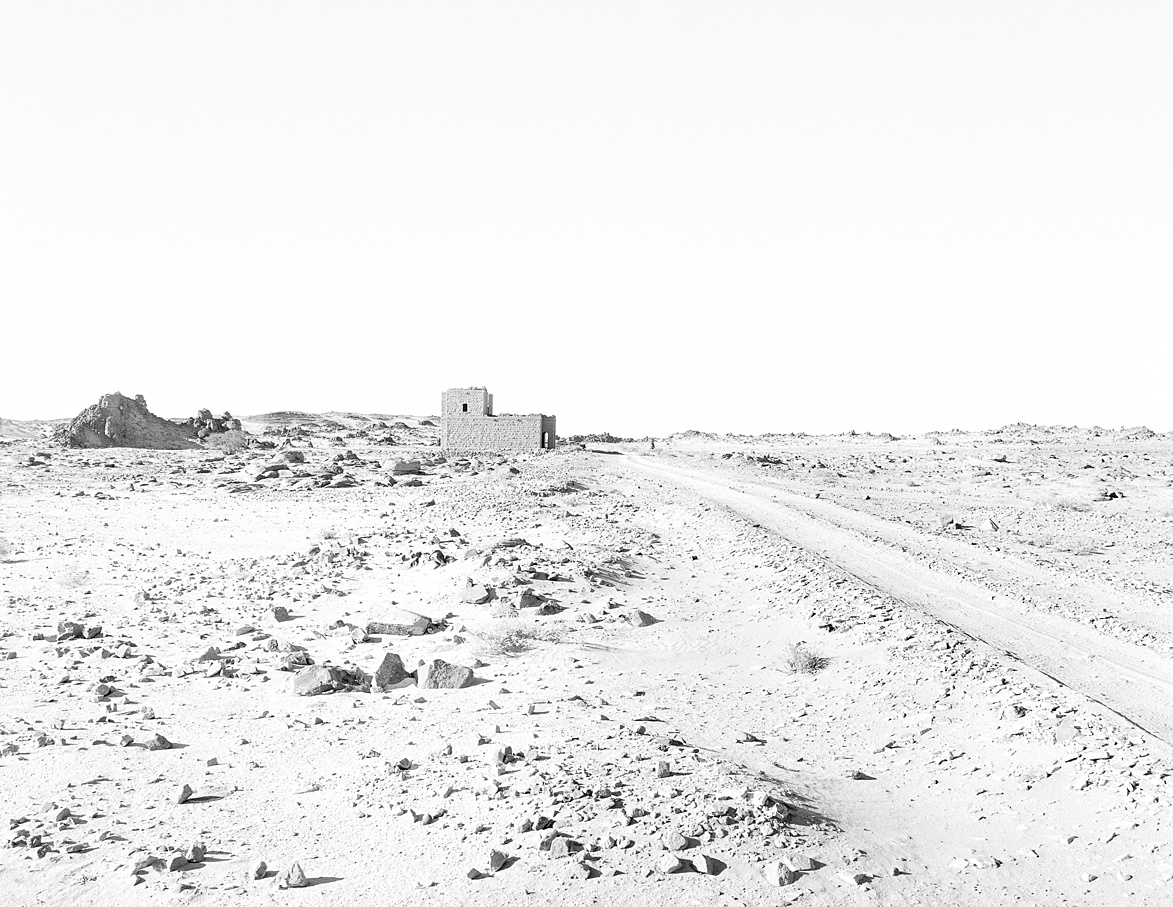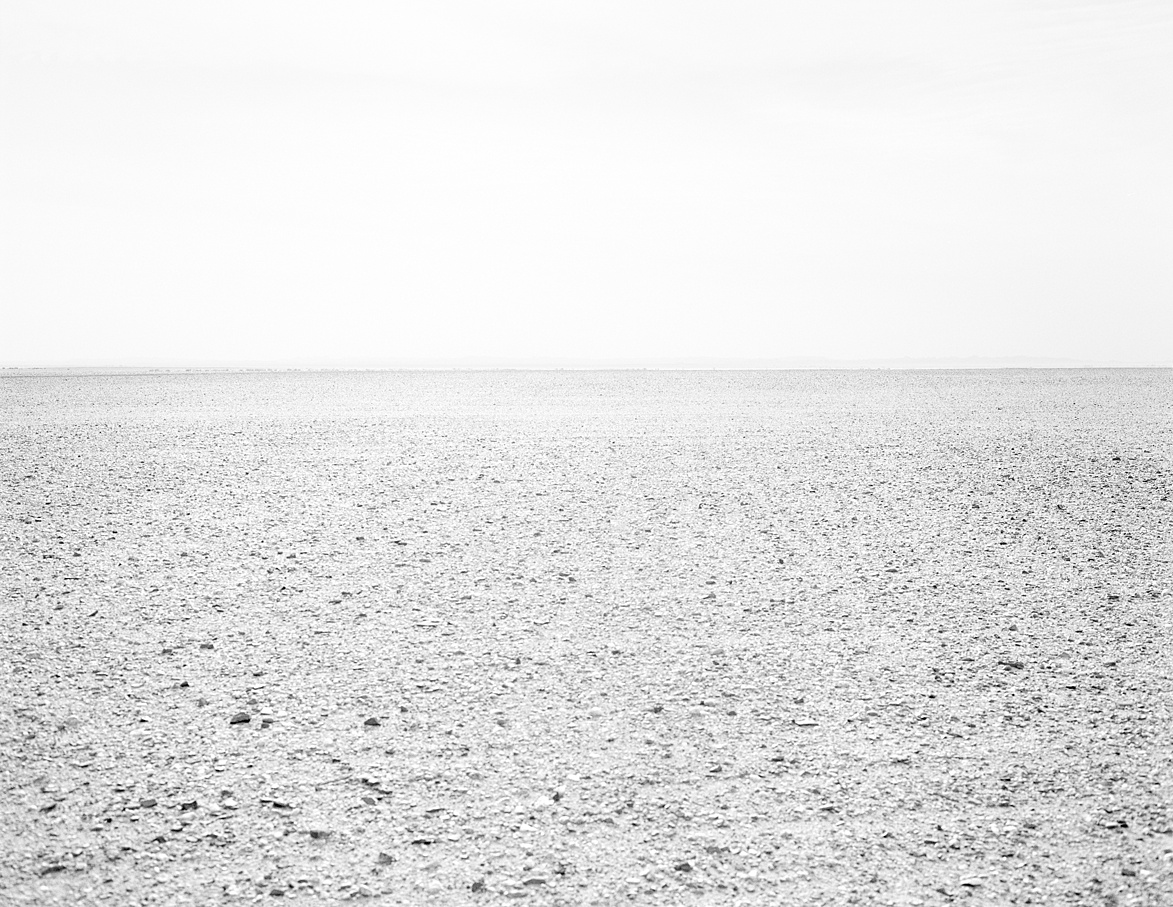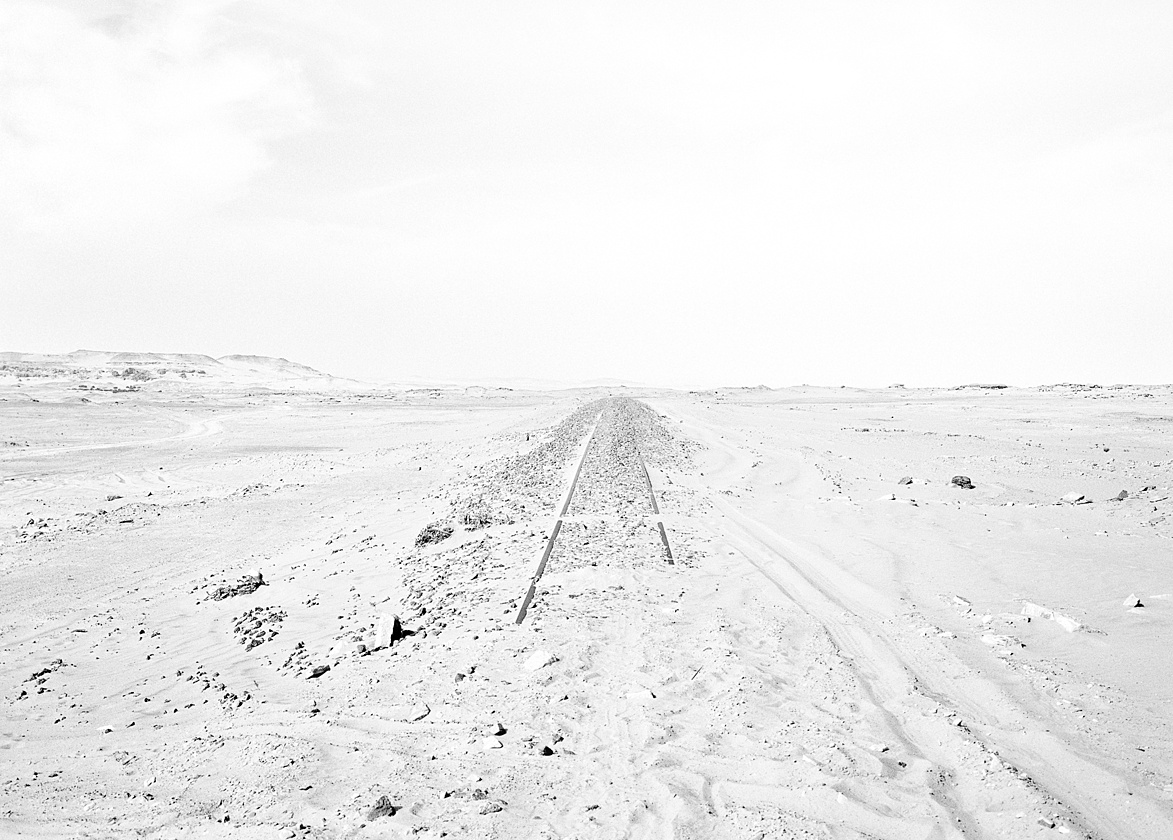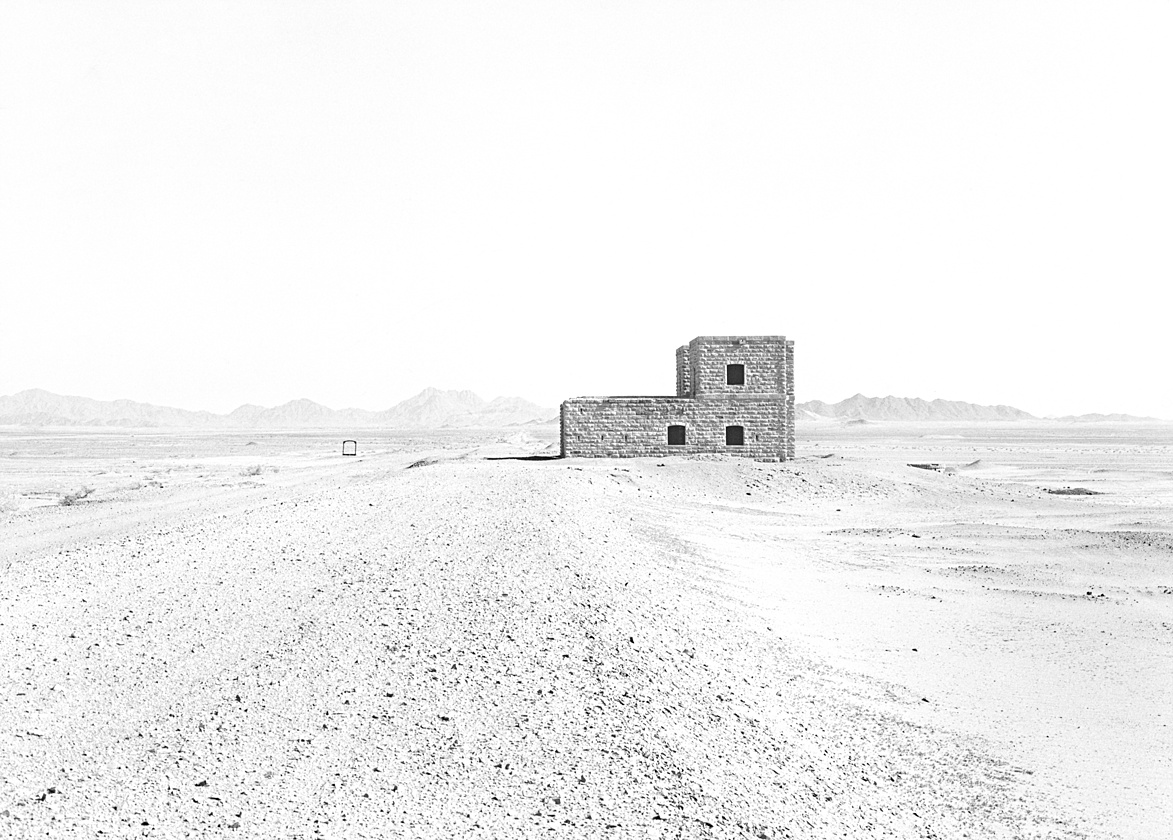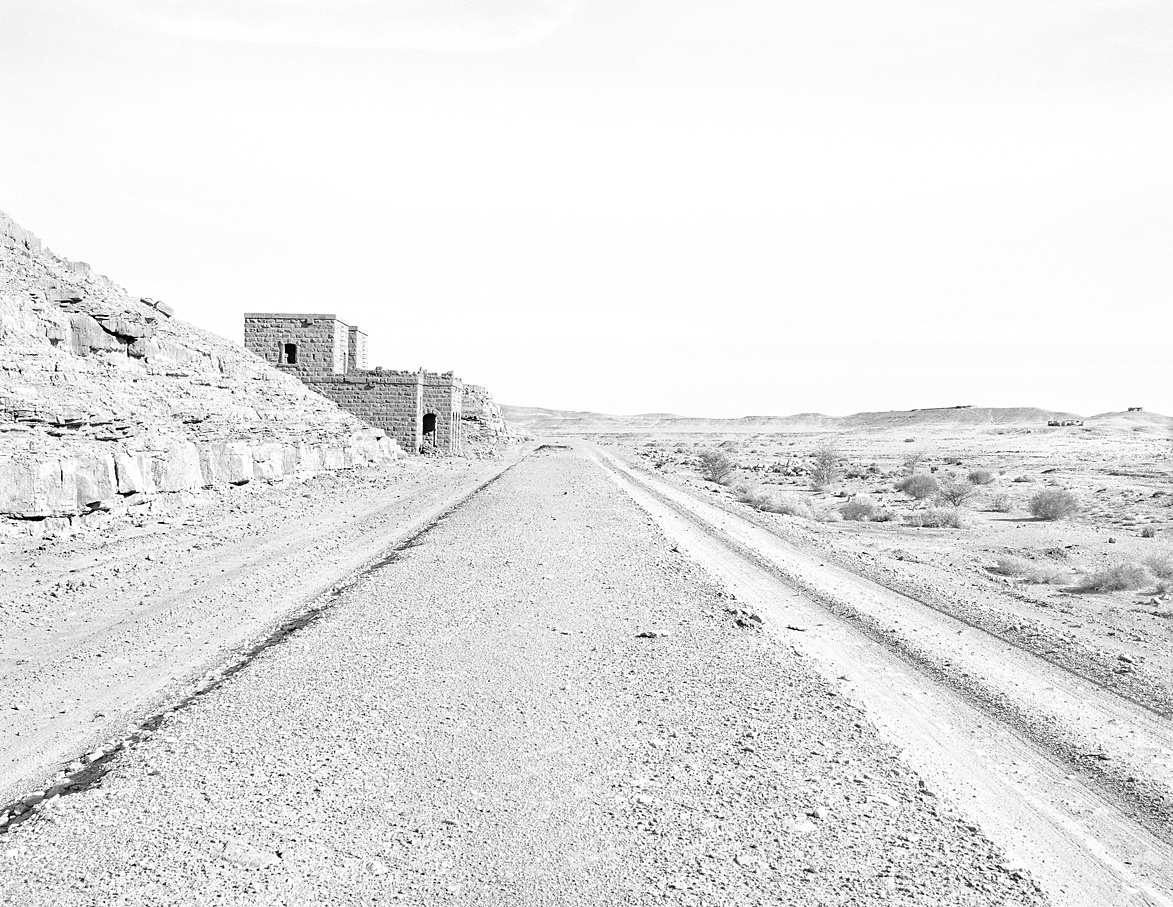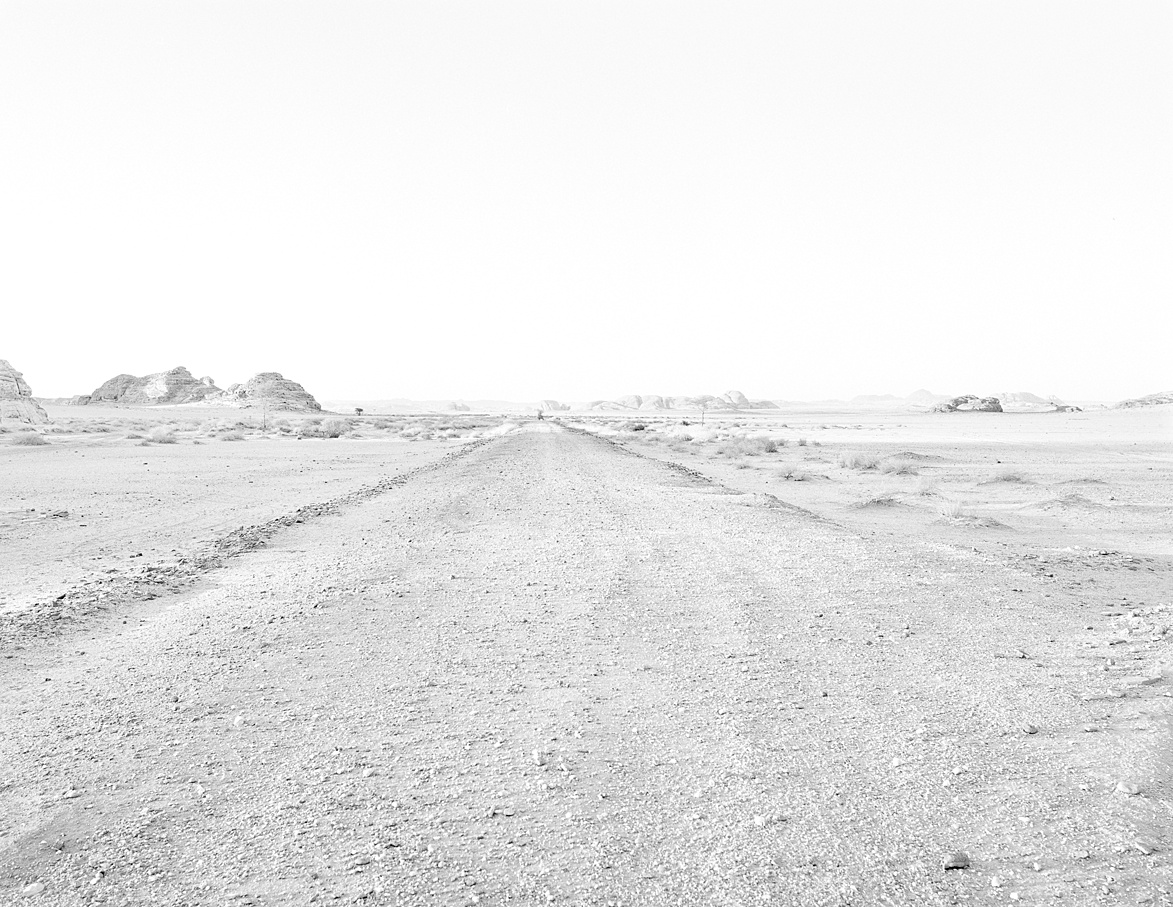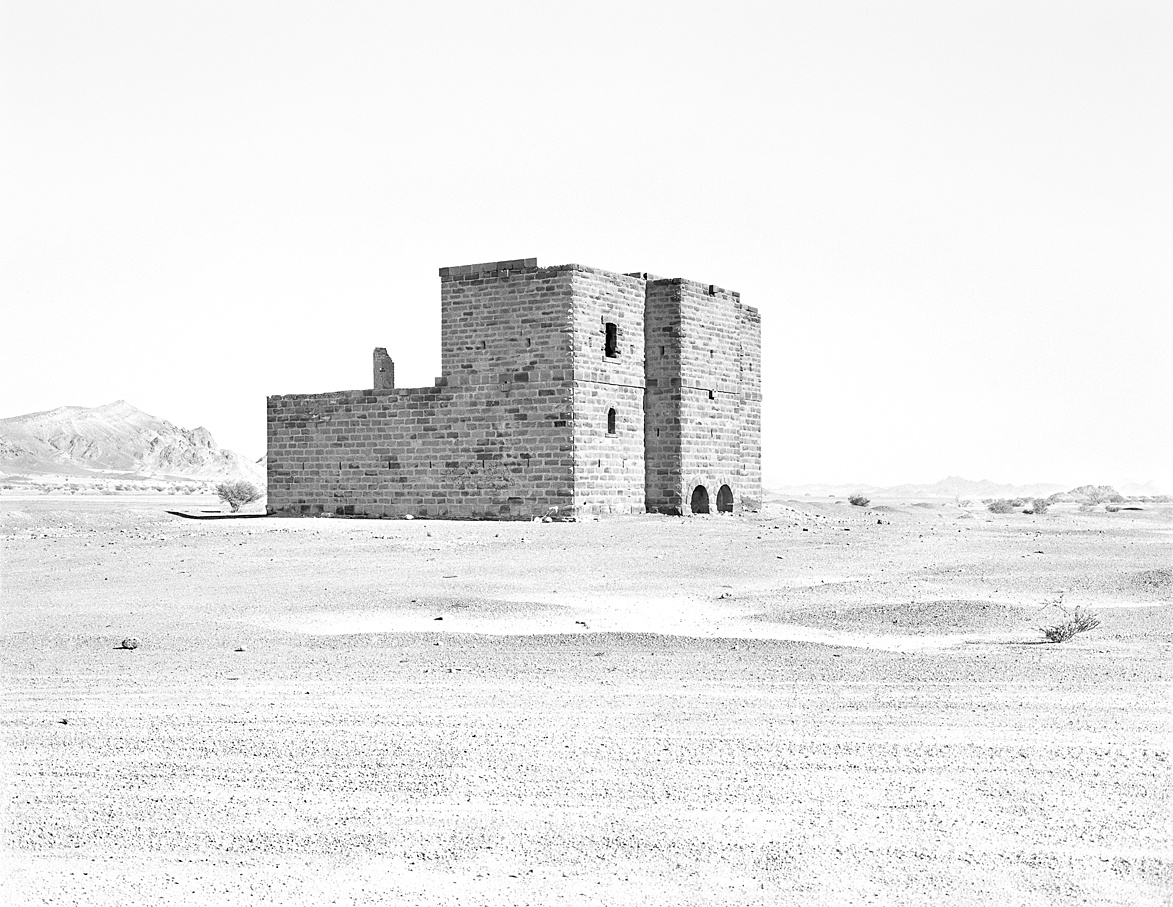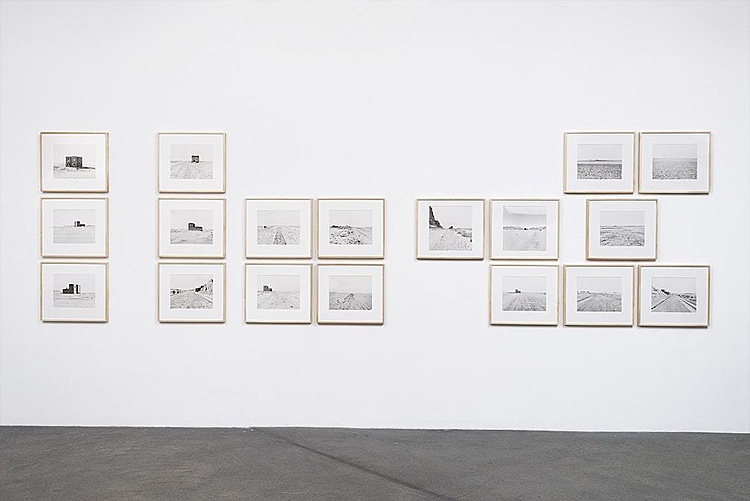FROM MEDINA TO JORDAN BORDER
2002/03

Julian Heynen: These pictures literally progress along a line that starts in Medina and leads north towards Jordan. Path, route, destination: the viewer’s gaze is often drawn into the distance along a railway line. This route through the desert is an ancient pilgrim’s way. But it is also seen in these photographs as the (similarly long defunct) backbone of a wholly modern mode of transport.
Ursula Schulz-Dornburg: The railway from Damascus to Medina was built by the Ottoman Empire in the early 1900s with technical assistance from the German Empire. Besides being intended for pilgrims it was also an instrument used by the colonial powers in this part of Arabia. As before in Mesopotamia, my initial interest was in the different historical layers of this route. It goes right back to the second millennium BCE; later it became an incense route and a path for Muslim pilgrims, and now it is strewn with the remains of railroad tracks. All along it there are the same, simple railway stations, designed by a German engineer. They look utterly alien in this landscape, as though an exponent of Minimal Art or Land Art had been at work here.
JH: Did your observation of the remains of the railway line maybe have something to do with a feeling of futility, with the idea that ‘the desert always wins’?
USD: No, not at all. Even if things do gradually disappear in the sand — there will always be decay, destruction and war — traces still linger on, which we can activate through our observations. Although it is true that some traces of the past are barely perceptible and certainly not decipherable.
JH: Pursuing those different historical traces sometimes comes to a halt at the point where the usual definitions and concepts no longer apply.
USD: As in some of my other groups of works, the horizon is particularly important as a line that I can use as a point of reference.
JH: Yes, the horizon almost seems like a spirit level, a way of calibrating your own standpoint with that of the object in your sights.
USD: In formal terms the horizon line certainly gives the picture a sense of security, a steadiness. But the horizon is also the line marking ‘the end of the Earth,’ that’s to say, a boundary. I’ve always loved travelling not just downwards into time but also upwards into the universe.
JH: The horizon is also a ‘land in between’, a no-man’s land. Even if you think you might nearly be there, it constantly recedes. In fact you can never reach it, it is always an unattainable destination.
‘The Verticals of Time’: excerpts from conversations between Ursula Schulz-Dornburg and Julian Heynen in December 2017 and January 2018.
